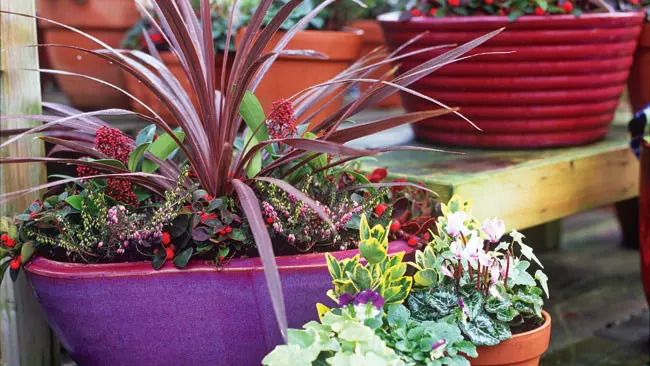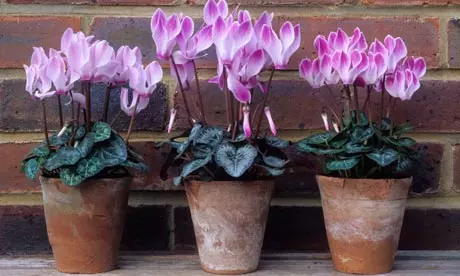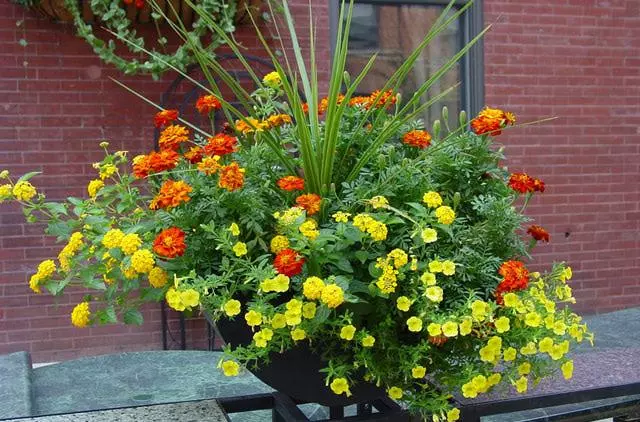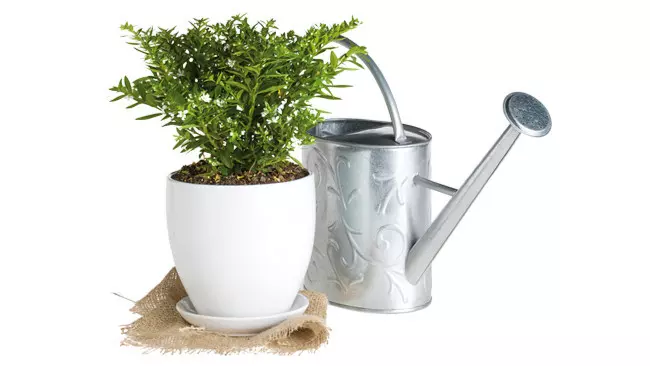Features of care for container flowers follow from the conditions that the containers are low in soil, low in nutrients and low in moisture.
Therefore, plants in containers need to be watered and fertilized much more often than in the open ground. You can use the same fertilizers as for the main flower beds in the garden, and you can buy special, more concentrated. Be sure to cut the faded inflorescences from time to time, this should be done much more often than flowers that grow in open ground. Remember: containers can be of any size, but you should still try to move even the largest container if necessary.

Watering and humidity for container flowers
For plants planted in containers, daily watering is mandatory, as the soil in the containers dries faster than in open ground. In the hot summer plants should be watered twice a day: morning and evening. Spraying plants in containers will also be well received, especially for ornamental deciduous and houseplants. However, in no case do not spray the plants in the sun – water droplets will serve as small lenses that can cause severe burns on the leaves. This should be done in the shade or in the evening, and the water should be settled. After each watering, slightly lower the soil to a depth of 1 -1.5 cm, only near the walls of the pot, so as not to damage the roots.
The smaller the container, the faster the roots absorb moisture from the soil.
In small containers, if they are located in a sunny place, it is good to add hydrogel and perlite to the soil, then the earth will not dry out so quickly.
If the forecast promises heavy rainfall, it is better to put containers under a canopy or cover with plastic wrap.

Features of feeding plants in containers
Sometimes the plants in the containers do not look very good. The reason is insufficient nutrients. To make your plants in the containers feel good and bloom profusely, they need to be fed every 7 days with a solution of complete mineral fertilizer. Several times during the summer you can feed with organic fertilizers diluted in a ratio of 1:20 (dry cow, chicken manure).

Fast-growing plant species should be fed once a week, slow-growing – once every 2-3 weeks.
The basic rule: young plants need more nitrogen, and adults and flowering – more potassium and phosphorus.
Very useful for plants in containers will be foliar fertilization with a solution of mineral fertilizers, especially for those plants that are in small pots, such fertilization is useful and ampelnyh plants (fertilize during watering).
Features of plant care after flowering
For active plant growth in containers, be sure to remove weeds, prune dried stems, cut off yellowed leaves, remove faded flowers along with seed boxes, and remove faded plants completely, replacing them with others.
In autumn, all the remains of annual plants should be discarded; perennials prepare for winter, and houseplants to move indoors. Old soil should be discarded to prevent disease and pests, wash containers well with soap solution and hide until next season.

